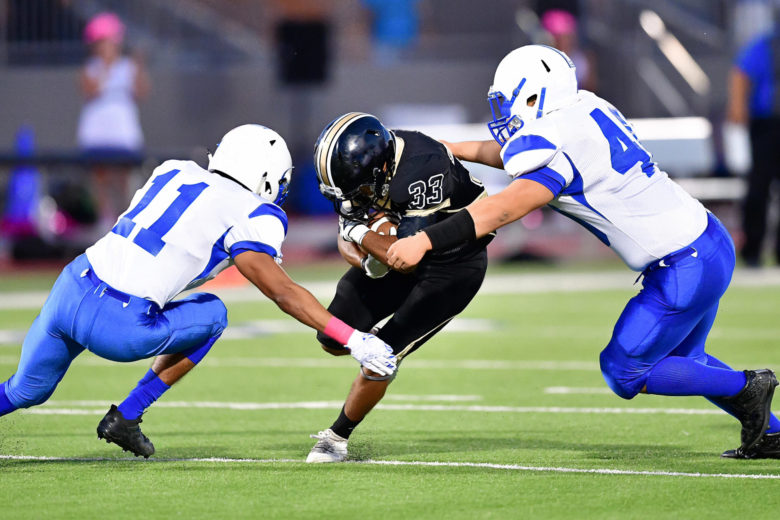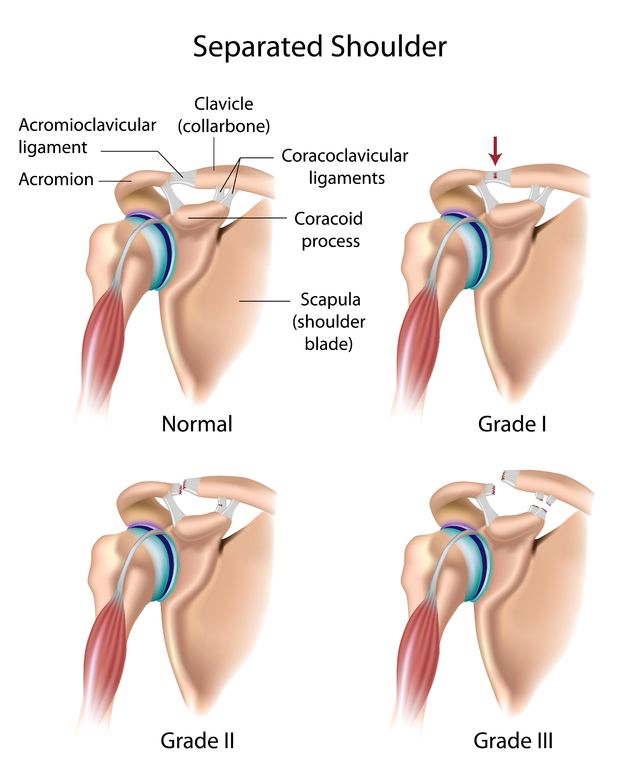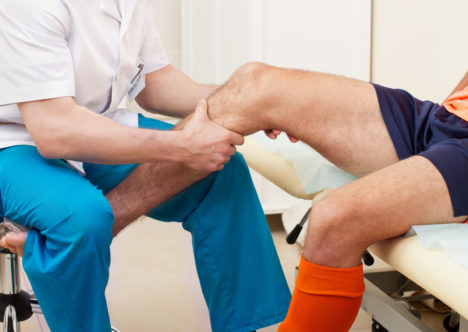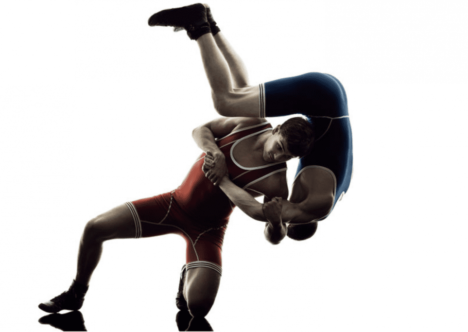Use our convenient online scheduler to book an appointment now.

A shoulder separation, also known as an acromioclavicular joint separation or AC joint separation, is a common and painful injury. Fortunately, it usually heals without surgery. Let’s take a look at what it is, how it occurs, and the best treatment methods.
What is an AC Joint Separation?
The main shoulder joint is supported by several associated muscles, ligaments, and bones, and even by other nearby joints. One of these joints is the AC joint, made up of the Acromion (the “A”) and the Clavicle, or Collarbone (the “C”). This rigid joint is held together by several ligaments on top of the main shoulder joint.

Due to its location, its lack of flexibility, and the fact that it is not surrounded by very much muscle, the AC joint is very susceptible to injury.
An AC joint separation is just that: a complete or partial separation of the acromion from the outer end of the clavicle at the AC joint. This occurs when the ligaments that hold the joint together are sprained (partially torn) or completely torn.
How AC Joint Separations Occur
Most AC injuries occur when someone lands or is struck forcibly on the top or side of their shoulder. Hockey and football players are especially susceptible to these injuries. For example, a quarterback sack can drive the shoulder into the ground, or a hockey player may be forced into the boards. However, AC joint separations can occur in nearly all sports, including skiing, biking, and boogie boarding.
The video below shows a biker sustaining a right shoulder separation. (See the slow-motion video at 0:30 secs for the best view.)
Signs and Symptoms of an AC Shoulder Separation
If you separate your shoulder, you’ll know it right away. These injuries are very painful.
More specifically, you may have a joint separation if:
- You have immediate and significant pain at the top of your shoulder at the AC joint.
- You cannot lift your arm due to the pain.
- You notice swelling at the top of the shoulder.
- You have bruising of the skin around the injured joint.
- You have a deformity at the top of the shoulder; this is usually an obvious bump in the same area as the pain.
- Your shoulder droops somewhat.
Because the symptoms of this injury are similar to those of a broken collarbone, get medical treatment, including an X-ray, right away. Shoulder separations are graded based on the extent of the ligaments’ injuries and of the injury to the surrounding soft tissues. The severity of the injury guides the treatment recommendations.
Treating Shoulder Joint Separations
Essentially, there are two main types of shoulder separations: those that require surgery and those that don’t. Fortunately, most AC joint separations can be treated without surgery.
Nonsurgical Treatment
Again, most AC injuries do not require surgery. Even if there is a shoulder deformity, full, pain-free function can usually be regained without surgery.
Initial treatment consists of ice to reduce the swelling and numb the pain. Pain medications and rest, usually with the affected arm in a sling, are also typically advised. Once the pain is tolerable, usually 1-2 weeks after the injury, physical therapy to restore shoulder range of motion, strength, and function, is recommended. With this treatment, most can expect significant improvement within 2-6 weeks of their injury. However, full recovery for older or more active patients can take 2-3 months.
Surgical Treatment
Surgery is rarely needed for AC joint separations. It is reserved for injuries that have significant, specific deformities as revealed on radiographs (X-rays).
Surgery for an AC separation is not an emergency treatment. It is best done after the swelling and initial severe pain have improved. Using tissue from elsewhere in the body, the procedure repairs or reconstructs torn ligaments. The surgery may also install additional means to hold the AC joint in proper alignment, including sutures, pins, and screws. Full recovery from surgery can take as long as six months and most patients need a fair amount of physical therapy to restore pain-free function.
AC separations are common, painful injuries. Fortunately, they can usually be treated without surgery. Because the symptoms of a shoulder separation can be similar to other injuries that may require surgery, schedule an evaluation by an orthopaedic sports medicine surgeon if you suspect that you have sustained this injury.
Join our Mailing List
TCO provides patients with orthopedic problems the trusted resources and patient-centered advice they need to “Feel Better. Move Better. Be Better.”
© 2024 Town Center Orthopaedics | All Rights Reserved


